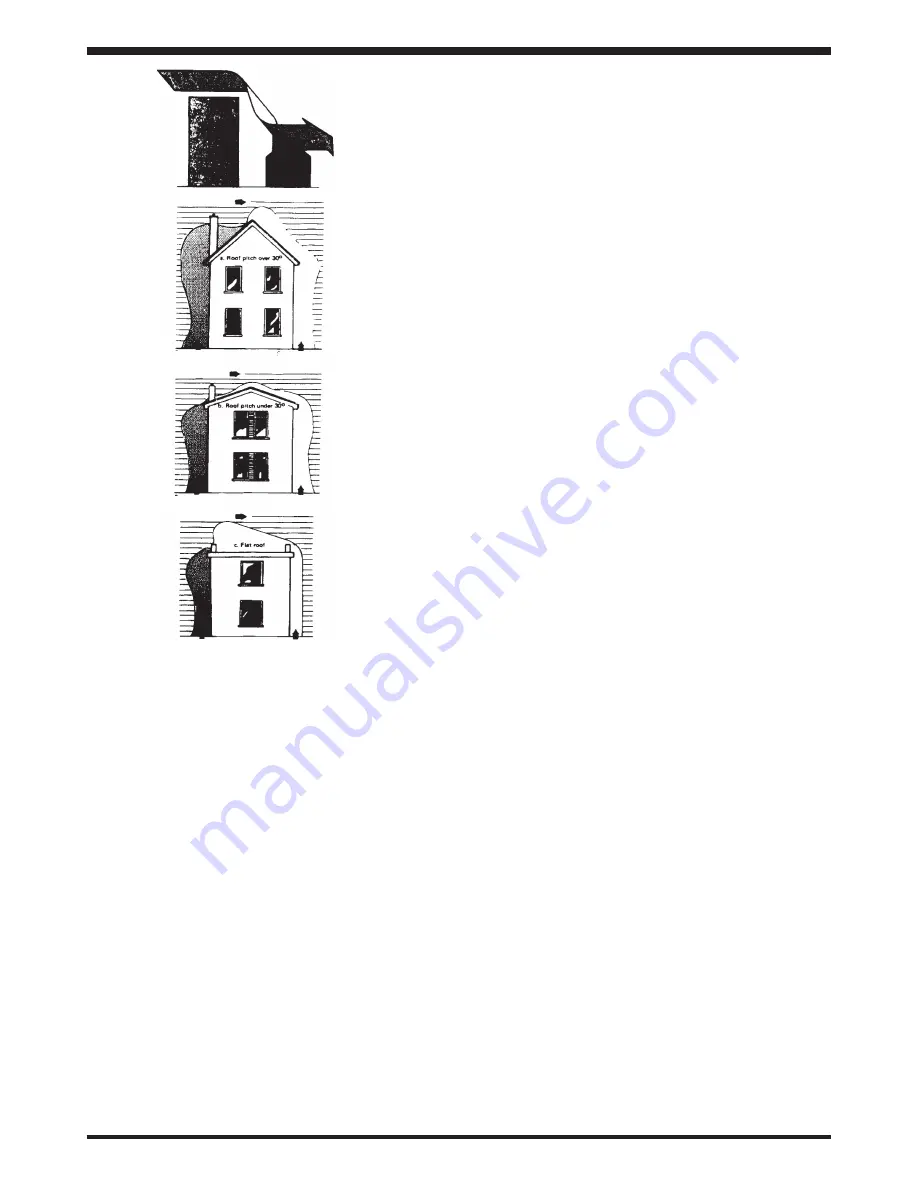
VENTILATION AND COMBUSTION AIR
REQUIREMENTS
A permanent air supply must be provided in accor-
dance with Building Regulation ADJ and BS 8303.
Please refer to Building Regulations Part J to deter-
mine the size of permanent air vent required, as fol-
lows:
Install where draft stabilizer is fitted:
Permanently open vents as below:
If design air permeability >5.0m
3
/(h.m
2
) then
300mm
2
/kW for first 5kW of appliance rated output
850mm
2
/kW for balance of appliance rated output
If design air permeability <5.0m
3
/(h.m
2
) then
850mm
2
/kW of appliance rated output (4)
Install where no draft stabilizer is fitted:
Permanently open vents as below:
If design air permeability >5.0m
3
/(h.m
2
) then
550mm
2
/kW of appliance rated output above 5kW
If design air permeability <5.0m
3
/(h.m
2
) then
550mm
2
per kW of appliance rated output (4)
Direction of wind
Direction of wind
Direction of wind
Pressure zone
Pressure zone
Suction zone
Suction zone
Pressure zone
Suction zone
Fig 2
If there is another appliance using air fitted in the
same or adjacent room, it will be necessary to
provide an additional air supply.
All materials used in the manufacture of air vents
should be such that the vent is dimensionally stable,
corrosion resistant, and no provision for closure. Air
inlet grills should be positioned so they do not
become liable to blockage.
The effective free area of any vent should be ascer-
tained before installation. The effect of any grills
should be allowed for when determining the effective
free area of any vent.
Air vents direct to the outside of the building should
be located so that any air current produced will not
pass through normally occupied areas of the room.
An air vent outside the building should not be locat-
ed less than the dimensions specified within the
Building Regulations and B.S. 8303: Part 1 from any
part of any flue terminal. These air vents must also
be satisfactorily fire proofed as per Building
Regulations and B.S. 8303: Part 1.
Air vents in internal walls should not communicate
with bedrooms, bedsits, toilets, bathrooms or rooms
containing a shower.
Air vents traversing cavity walls should include a
continuous duct across the cavity. The duct should
be installed in such a manner as not to impair the
weather resistance of the cavity.
Joints between air vents and outside walls should be
sealed to prevent the ingress of moisture. Existing
air vents should be of the correct size and unob-
structed for the appliance in use. If there is an
extraction fan fitted in adjacent rooms where this
appliance is fitted, additional air vents may be
required to alleviate the possibility of spillage of
products of combustion from the appliance/flue
while the fan is in operation. Refer to B.S. 8303 Part
1.
Where such an installation exists, a test for spillage
should be made with the fan or fans and other appli-
ances using air in operation at full rate, (i.e. extrac-
tion fans, tumble dryers) with all external doors and
windows closed.
If spillage occurs following the above operation, an
additional air vent of sufficient size to prevent this
occurrence should be installed.
4






































